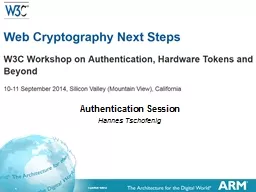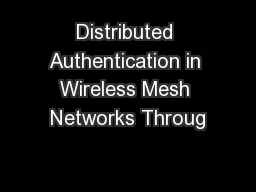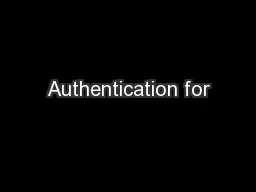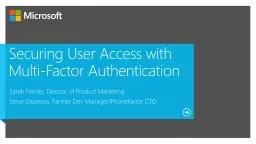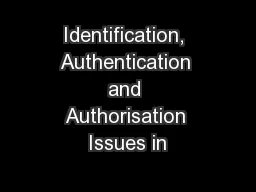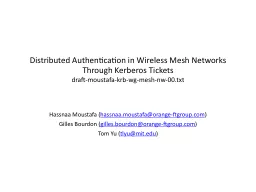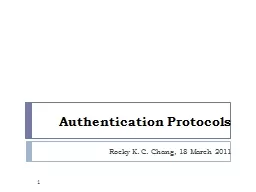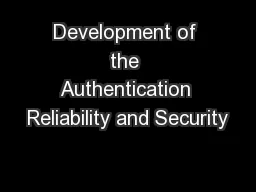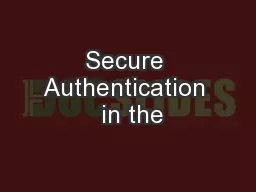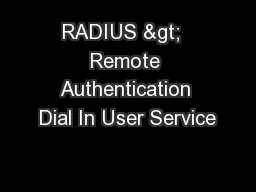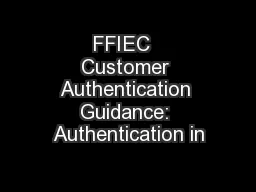PPT-Authentication Session
Author : karlyn-bohler | Published Date : 2015-12-08
Hannes Tschofenig Introduction Problem with passwords has been known for a long time Many attempts have been made to invent and standardize solutions for multifactor
Presentation Embed Code
Download Presentation
Download Presentation The PPT/PDF document "Authentication Session" is the property of its rightful owner. Permission is granted to download and print the materials on this website for personal, non-commercial use only, and to display it on your personal computer provided you do not modify the materials and that you retain all copyright notices contained in the materials. By downloading content from our website, you accept the terms of this agreement.
Authentication Session: Transcript
Download Rules Of Document
"Authentication Session"The content belongs to its owner. You may download and print it for personal use, without modification, and keep all copyright notices. By downloading, you agree to these terms.
Related Documents

